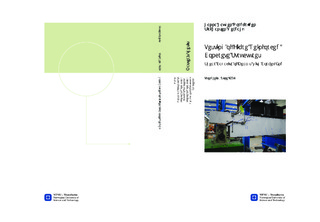| dc.description.abstract | Fibre reinforcement as a substitute for conventional bar reinforcement provides for a more efficient construction and building industry, and is therefore of high interest. Today, several countries are developing rules and regulations for the use of fibre reinforced concrete in load carrying structures.The aim of this thesis was to consider the use of fibre reinforcement in load carrying concrete structures, and the main focus was on shear capacity of corbel-end beams. The thesis was divided into two parts: A theoretical part and an experimental part. A full-scale laboratory testing was performed on ten corbel-ends, and on one reference beam without corbel-ends. Different fibre types, material properties, mechanical behaviour of fibre reinforced concrete and test methods were emphasized, in addition to relevant formulas and mechanical relations. Throughout laboratory testing of full-scale beams, different reinforcement layouts were compared with traditional layout. The capacity, ductility, cracking load and crack pattern were investigated. Furthermore, evaluation of the results against current design methods, guidelines and previous results concerning shear problems in corbel-ends were done.Test results proved that the calculated fibre effect was too high. The contribution of vertical stirrups could be directly related to the calculated capacity of the vertical stirrups. The capacity of the fiber reinforced beams was lower than the traditionally reinforced beam, but they had higher ductility and obtained higher load-carrying capacity at large strains. One beam was cast with an optimized casting procedure, and the results indicated that a favourable fibre orientation and distribution was obtained in this beam. All design guidelines gave generally conservative capacities based on the theoretical residual tensile strength, but too high capacities based on the measured residual flexural tensile strength.The overall conclusion of this thesis is that fibre reinforcement may be used as a fully or partly substitute for traditional shear reinforcement in load carrying corbel-end beams. More research on the field is still needed to validate the design guidelines. | nb_NO |
